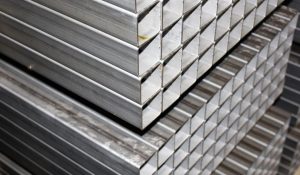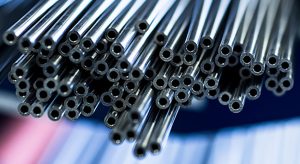Round Metal Tubing Vs. Square Metal Tubing
Metal tubing comes in a wide variety of materials. Depending on your needs, you can find metal tubing in aluminum, steel, and an assortment of alloys. Most of this tubing, however, comes in two basic shapes: square and round.
Each shape has its own unique advantages, but which is best for your specific project? While the answer is complex and can involve a dizzying array of engineering specs, measurements, and strength ratings, most users can get a strong indication by looking at the basics of their project.
The answer goes far beyond the space, dimensions, and shape of the project. You need to consider the purpose of the metal tubing, how much material will be bent or cut, how much weight it needs to hold, and how it will hold this weight, among many other factors.
Ultimately, you’ll need to talk with an expert to determine the best materials for your need, but this article will help you understand the basic differences between square and round metal tubing…
The Advantages of Square Tubing

Square tubing has many advantages, and some disadvantages, compared to round.
First of all, square tubing is generally easier to build with, as the cuts and edges fit together much easier. If you butt the end of a square tube against the side of another, you will have a flush fit that can be easily attached. To do the same with round tubing, you need to cut a rounded edge into the tube that will fit against the other. Because everything is essentially 90-degree angles, it’s much easier to cut and construct with square tubing.
Square tubing, because it has a flush face on four sides, is also easier to drill, bolt, and attach. Image drilling a bolt hole in a flat metal surface; now image doing the same on a rounded surface. You can drill into rounded surfaces, but it’s clearly easier to drill, screw, and bolt into the flat face of a square tube.
Square tubing is also easier to get closer together, which means there is less wasted space.
Structurally, it’s hard to say that one is stronger than the other, as so much depends on the specific application. However, square tubing tends to be stronger in a single, unbent piece.
The Advantages of Round Tubing

While square tubing tends to be easier to work with, round tubing has two main advantages: cost and weight.
A 1-inch diameter round tube uses less metal than a 1-inch-wide square tube. Because it uses less metal, a 1-foot section of round tube (for example) will weigh less than a 1-foot section of square tube. (Again, assuming 1-inch diameter vs 1-inch square.) Less raw material also means a lower price tag, so round tubing is often the ideal choice when cost is a concern and you don’t need the advantages of square tubing.
But cost and weight are certainly not the only concerns. Tubing, regardless of shape, needs to be strong and sturdy. In the right application, round is often stronger, especially when it’s under pressure. There is less chance for unwanted bends, breaks, and crimping when using round metal tubes.
Round tubing tends to accept bending and shaping with greater ease. Because of the cylinder-like shape, metal moves more evenly as it is bent; when properly bent by an experienced professional, there is less chance for distortions or concaving.
Square vs Round Metal Tubing: How to Pick the Right Option
It’s hard, quite frankly, so select the perfect one for your specific needs. Each project is different, and each buyer has unique goals and priorities. But there are still some basic principles that can guide you when selecting the metal tubes for your application.
Most of all, if your job will require a lot of cutting, welding pieces together, drilling, and bolting, square tubing is probably the best choice. Like 2×4 boards, square tubing is easier to build with and can be used to create the frame for a wide variety of structures and items.
However, if your project will include lots of bending and shaping, round tube is probably better. The strength and formability of round tubing make it better for an assortment of uses and other attributes, including its weight and price, make it more attractive as well. When properly oriented, square can be stronger (it’s stronger across the flats but weaker at the corners) but most will find that round is a stronger material.
If you need help deciding between square vs round metal tubing contact our friendly, knowledgeable team today.
We’ll help you make the right choice for your project, so contact Service Steel today!
